Trivia about Philippine Architectural Heritage
| EI Hogar D. Antonio Melian established in 1910 a building society that issued mortgages called “EI Hogar Filipino.” Four years later, in 1904, the four story building of the company, designed and constructed by Irureta-Goyena, was inaugurated on the corner of Juan Luna in Binondo facing the Pasig River. Designed with touches of the French Beaux Arts style, it has an enriched entablature topped with an attic story and a flat roof. It looks deceptively sedate until one enters its discreet entranceway. The double door leads to a center courtyard with balustraded corridors connected by an exuberant Art Nouveau staircase situated along the end of a passageway. With bronze griffins for newel posts and gilt swirling around initialed medallions, the interior speaks of a bygone elegance. | |
 | Regina Building One of the earliest structures made of reinforced concrete, a material introduced during the American colonial period. According to sources, the original three-story building was designed by Andres Luna San Pedro. In the early 1930’s it was bought by the De Leon family from the Roxas family and a fourth floor commissioned from architectFernando Ocampo. The building is one of Manila’s architectural landmarks, and is an example of the Art Deco style. Together with the Perez-Samanillo. |
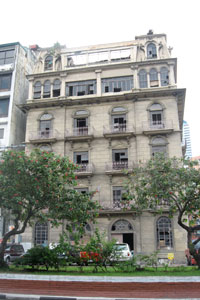 | The Luneta Hotel, the only building in Manila with French Renaissance style windows and balconies with cast-iron grills, has been attributed to Andres Luna San Pedro at various times. But what is known is that it was planned and owned by a Spanish architect-engineer, Salvador Farre, who also designed and built theMontalban Dam. The Hotel may have been built in 1918 or 1920 when the Americans brought in reinforced concrete that allowed the construction of high rises. An early title to the property from Manila City Hall, dated 1915, makes no mention of the building. In 1922 a mortgage was taken out that was eventually paid off in 1930. |
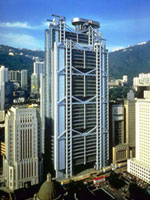 | The Hong Kong Shanghai Bank Building On September 22,1922, the acting Governor-General of the Philippines, Charles Emmett Yeater, spoke at the dedication of the Hong Kong Shanghai Bank’s new building on Calle Juan Luna and Callejon San Gabriel in Binondo. Standing on a 10,706 sq. meter lot with five storys of structural steel encased in concrete; its treasury vaults had enclosing walls of 40 inches, including armored walls 20 inches thick and reinforced with two networks of twisted steel bars. The ground floor ceiling was 23 ft high, and the upper floor’s ceiling six1een feet high. The architect was an American, G.H. Hayward, as was the contractor, Oscar F. Campbell. |
 | Pangasinan Provincial Capitol The neo-classical provincial capitol of Pangasinan designed by architect Ralph Harrington Duane, is probably the most famous building dating back from the American colonial period. Easily the most impressive public building in the province, its erection involved meticulous city planning. It formed the centerpiece of a grandiose plan that included the provincial high school and the governor’s mansion. It was inaugurated in 1918. The Capitol was severely damaged during the pre-landing bombardment of Lingayen Beach by the American 7th Fleet in January 1945 and later restored. |
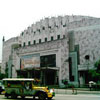 | Metropolitan Theater The Metropolitan Theater is the most outstanding example of Art Deco architecture in the country. Designed by Juan Arellano in 1931, it stands in contrast to the neo-classical architecture that typifies its adjacent buildings. The facade of the Metropolitan Theater is festive and colorful. It features stylized motifs typical of Art Deco design, but with a uniquely Filipino touch. These Filipino motifs of tropical flowers and fruits ornament the structure’s grilles, stairways and wall detailing. The other remarkable features of the Metropolitan Theater are its proscenium-like entrance, window-mural of colored glass. The 4-bay, six story building is crowed by a pair of mansard roofs. On the front French windows open to balconies with cast-iron grills. The balconies are supported by consoles. Amorsolo murals and plaques depicting the muses of Music, Tragedy, Comedy and Poetry adorn the walls of the building. The Metropolitan is in danger of being demolished. |
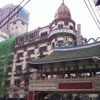 | (Uy-Chaco Building) Philtrust Bank Building Built in 1914 by Samuel C. Rowell, the 6-story Uy-Chaco Building on Plaza Cervantes is considered Manila’s first skyscraper. The design is rather electric. However, its undulating balconies and iron grilles mark it as belonging to the Art Nouveau style, making it Manila’s first and last building style. The most striking feature of the building is the projecting turret on its northeastern corner. The rounded corner, emphasized by curving railings, gives the building the appearance of a French chateau. Rising from the eaves is a gabled roof with round clocks instead of windows. The building also features eight distinctly-designed bats, and projecting balconies on the third, fourth and fifth, floors. |
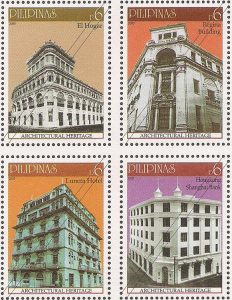
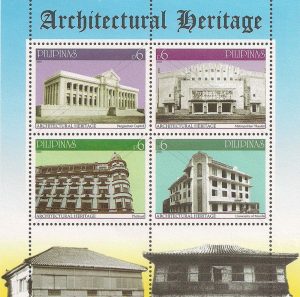
Recent Comments